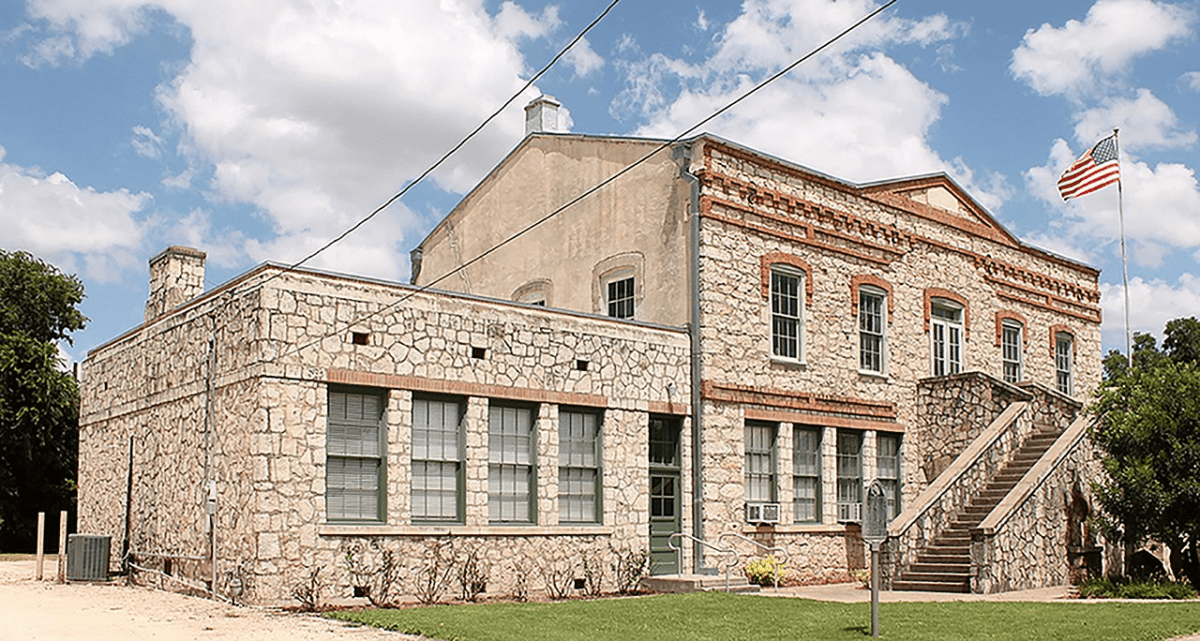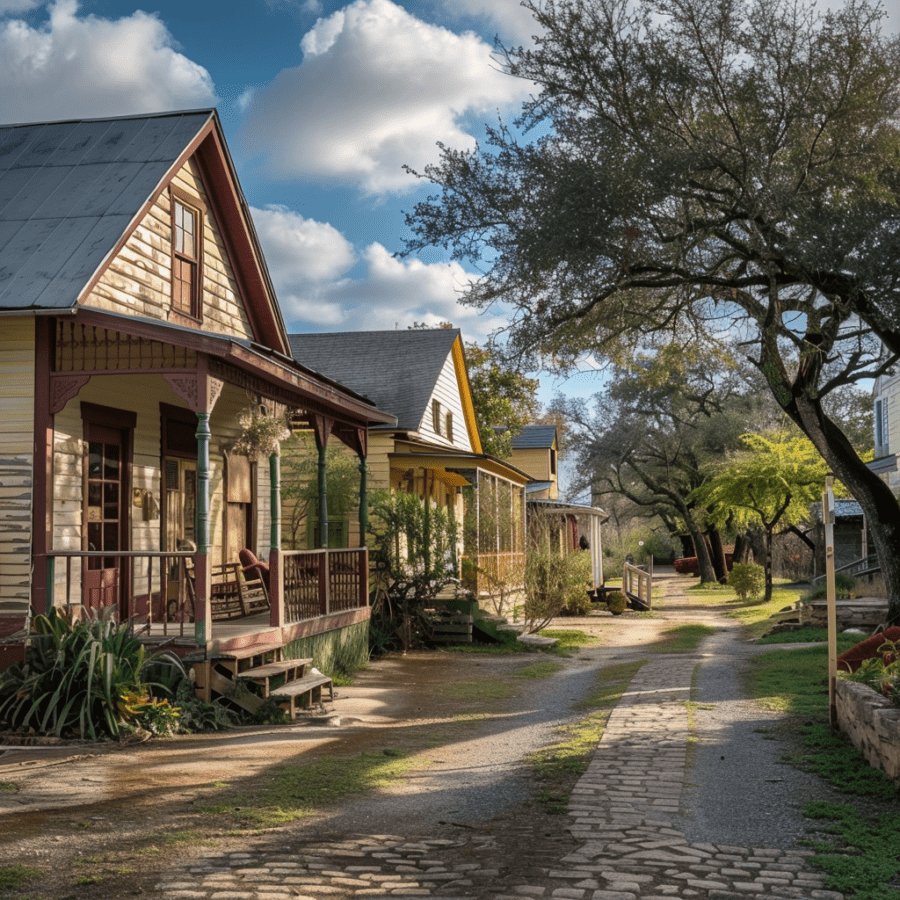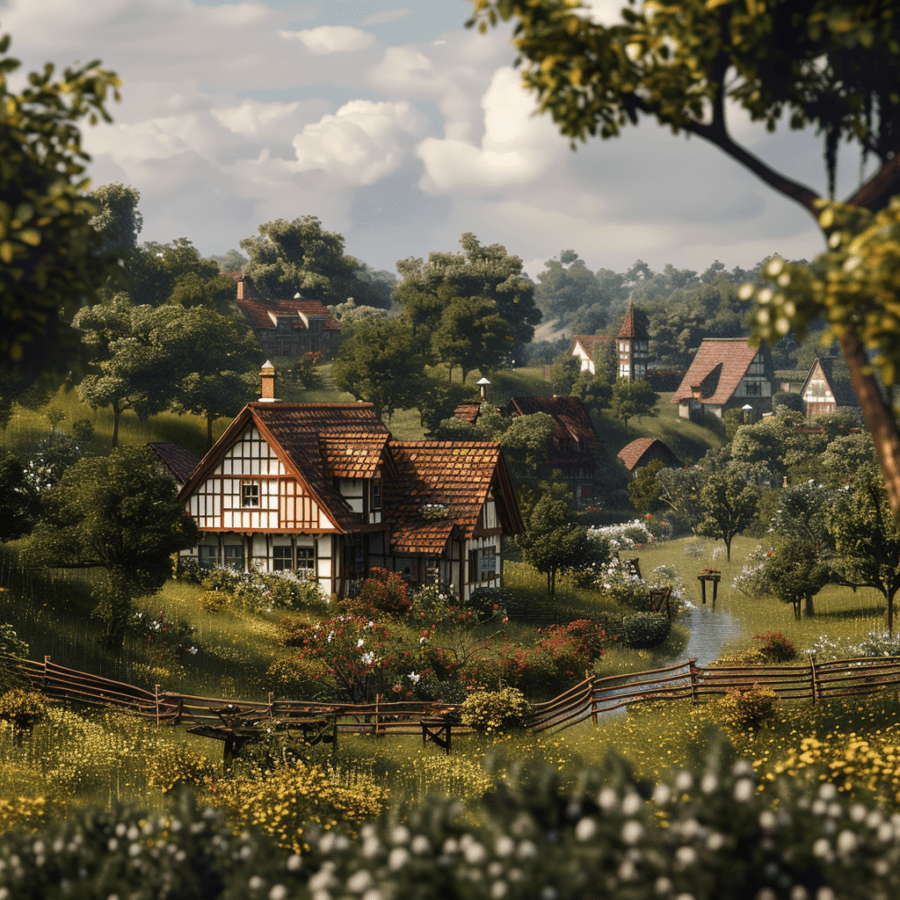Share the post "Exploring the Rich European Origins of Castroville: Texas’ Little Alsace"
Discover the hidden gem of Castroville, Texas, a quaint town with a rich European heritage that sets it apart from its Texan surroundings. Uncover the fascinating story of Alsatian immigrants who brought their culture, language, and architecture to this charming enclave, creating a unique blend of European charm in the heart of the Lone Star state.
Join us on a journey through the history, architecture, and cultural traditions that make Castroville a vibrant and captivating destination, showcasing the enduring legacy of its European origins.

The Settling of Castroville and its European Origins
Alsatian Immigration to Texas
Castroville, a town with a quiet, rustic charm, has been made vibrant by the influence of European immigrants, particularly from Alsace. These brave folks didn’t simply migrate to America. They stitched together a patchwork town filled with European spirit along the edges of the Lone Star state.
European immigrants breathed life into Castroville, infusing it with their unconventional language and architecture.
- Begin with language: An Alsatian dialect, a rare gem, remains alive in Castroville, spoken fluently by several folks, adding a unconventional linguistic note to the Texan landscape.
- Proceed to architecture: Authentic Alsatian houses dot the Castroville streets. Their warm brick walls, woodwork intricacies, and sloping roofs narrate tales of the homeland.
The Land Grant by Henri Castro
The idea of Castroville sprouted from the entrepreneurial mind of Henri Castro. A multi-faceted man of Portuguese descent, he was the linchpin between the settlers and the Republic of Texas. His significant role:
- Negotiator: Secured a grant in 1842 enabling him to cultivate colonies in south-western Texas.
- Facilitator: Acted as a beacon guiding thousands of Alsatian immigrants to their newfound home where they could cultivate their deep roots.
In essence, Castroville’s story is etched with resilience, reinvention, and a strong sense of culture. Its European roots, especially those of the Alsatian ones, act as lifelines, pulsating with a vibrant life force, lending an unconventional European charm to a typically American setting. A visit here is like taking a stroll through an Alsatian village, even though it is thousands of miles away from Europe. Castroville, indeed, is an unconventional European enclave in the heart of Texas.

Architectural Testaments to European Heritage
As you explore Castroville, you uncover remarkable architectural jewels that hark back to its European origins. The structural masterpieces dotted across the town embody the ethos of Alsace, reflected in the preservation of Alsatian homesteads and the influence seen on public buildings and churches.
Preservation of Alsatian Homesteads
The Alsatian homesteads in Castroville stand as silent sentinels, witnessing the town’s cultural evolution. Here’s the beauty of it all: You don’t simply see these homes; you feel their history!
The architectural character of these homes tells tales of resolute immigrants who sustained their traditional building methods. Many homes, dating back to the 1840s, hold their heads high, featuring hipped roofs, broad eaves, large porches, and half-timbered walls – classic markers of Alsatian design.
- Steinbach House: Originally built in the 1600s in Alsace, France, it was brought to Castroville in 2002, piece-by-piece, and meticulously reassembled.
- Kammlah House: This classic Alsatian homestead served as a mercantile establishment in the late 19th century. Now, it’s a fascinating muse to the merchant life of yore.
- Somekey House: Built in 1847, it stands as a testament to the blending of cultures, melding American and Alsatian architectural styles.

Influence on Public Buildings and Churches
In Castroville’s public buildings and churches, you spot the palpable influence of Alsatian design principles. Among them, Saint Louis Catholic Church stands as an architectural marvel, fusing Alsatian aesthetics with American Gothic elements. This union manifests in the church’s pointed arch windows ornamented with intricate stained glass, lime-washed walls, and the steeply pitched roof, a characteristic feature of Gothic architecture.
The old Castroville Schoolhouse, now repurposed as the Castroville Public Library, retains its Alsatian flavor. Its limestone masonry, symmetrical facade, and trio of pointed arch windows whisper stories of an era past.
The European roots of Castroville bloom in their architectural beauty, rhythmically pulsating with the heartbeats of its people. As a visitor, it’s not simply about appreciating the architecture: it’s about immersing in the unconventional culture that lends Castroville its charm.
Cultural Imprints on Modern-day Castroville

Exploring through Castroville’s rich European heritage isn’t confined to its architecture. It expands into the realm of annual festivities and food traditions deeply rooted in the town’s Alsatian ancestry.
Annual Celebrations and Festivals
Castroville’s vibrant Alsatian heritage comes alive during its annual celebrations and festivals. Round the year, the town schedules a repertoire of events that not only showcase but also preserve European traditions.
Recall, for instance, the “St. Louis Day Celebration,” an annual homage to the patron saint of Castroville’s grand Catholic church. It’s an event that fuses religious observance with cultural camaraderie, featuring a day lined with family-friendly activities, classic French and German music, and, of course, from-scratch Alsatian food.
Castroville’s tradition of celebrating its Alsatian legacy also rings true at the “Old Fashioned Christmas.” A event that transports you back to winters in European villages, it offers a miscellany of live renderings of European carols, hot mulled wine samples and Alsatian Christmas cookies.
Legacy in Culinary Traditions
Beyond the architectural influence and festivities, Alsatian culture left a delicious imprint on Castroville’s gastronomic landscape. Alsatian culinary traditions permeate the town’s dining scene, offering a fusion of German and French dishes that promise a food lover’s paradise.
- Alsatian Restaurants: Castroville’s local restaurants, such as the “Alsatian Restaurant” and “Magnolia Filling Station,” cater to a menu rich in Alsatian staples. Dishes like the savory quiche Lorraine and flammkuchen, thinly rolled bread dough topped with onions and lardons, capture the essence of Alsatian cooking.
- Alsatian Bakeries: No trip to Castroville is complete without a visit to Haby’s Alsatian bakery. For over four decades, this local gem has been serving traditional Alsatian pastries that fly off the shelves, including kugelhopf (a yeast-based cake with almonds and raisins) and brioche.
These enduring European traditions position Castroville as a cultural and culinary treasure to be explored, preserving the town’s European roots while shaping its modern identity.
Share the post "Exploring the Rich European Origins of Castroville: Texas’ Little Alsace"
Christian Linden is a seasoned writer and contributor at Texas View, specializing in topics that resonate with the Texan community. With over a decade of experience in journalism, Christian brings a wealth of knowledge in local politics, culture, and lifestyle. He holds a Bachelor's degree in Communications from the University of Texas. When he's not writing, Christian enjoys spending weekends traveling across Texas with his family, exploring everything from bustling cities to serene landscapes.











